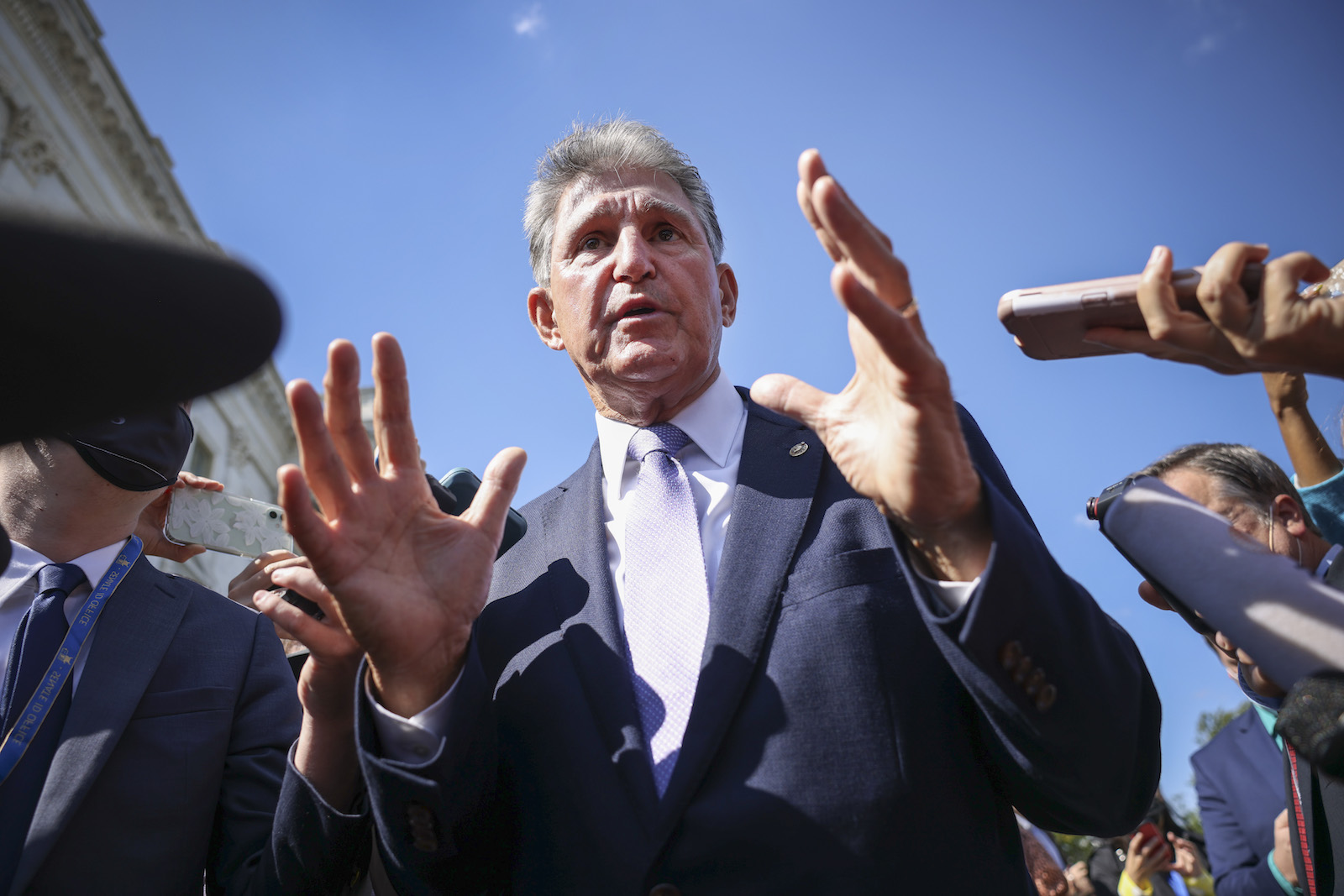As the world gears up for a massive United Nations climate change conference next month, a couple of U.S. senators are working to ensure that the U.S. fumbles a once-in-a-decade opportunity to address its climate-warming emissions.
Just a few weeks ago, it seemed like President Joe Biden was on track to accomplish what previous administrations have attempted and failed to achieve: writing an emissions-reduction policy into federal law. That policy, the $150 billion Clean Electricity Performance Program, is a system of carrots and sticks that would have pushed America’s electric utilities to go green between 2023 and 2030. The power these companies supply to your home would become progressively cleaner over that timeframe, putting the U.S. electricity sector, currently the second-most polluting sector in this country, on track to producing 100 percent clean electricity by 2035.
The Biden administration aimed to pass this program via a process called budget reconciliation, which allows Congress to make changes to laws that have to do with spending, revenues, or the federal debt limit. Crucially, reconciliation is immune to the filibuster — it only takes 51 votes to pass it in the Senate — which meant that Senate Democrats could vote to approve the budget reconciliation bill as a bloc, with Vice President Kamala Harris serving as a tie-breaker, and bypass Republican opposition to the bill. (Not one congressional Republican, not even the ones who say they care about climate action, has expressed support for any of the climate measures in the reconciliation bill.)
From the outset, it was clear that Senators Joe Manchin from West Virginia and Kyrsten Sinema from Arizona, centrist Democrats, were going to oppose the Clean Electricity Performance Program. Sinema reportedly said she wanted at least $100 billion cut from the climate programs in the budget bill (though she didn’t specify which ones). This might have been doable by chipping away at other climate spending in the package — like clean energy tax credits and funding to help rural electricity cooperatives —while keeping the Clean Electricity Performance Program intact. The Biden administration thought it could convert Manchin, who represents a coal state and has deep ties to the fossil fuel industry, to the cause by tweaking the program to allow electricity generated by gas- and coal-fired power plants to count as “clean” as long as those plants prevent their emissions from going into the atmosphere by using carbon capture and sequestration technology. On Friday, the New York Times reported that those conversion efforts had failed and that the White House was rewriting the budget reconciliation bill to exclude the Clean Electricity Performance Program.
Manchin’s problem with the plan was never explicitly about its exclusion of fossil fuels. He believes that utilities are decarbonizing on their own, as renewable energy becomes cheaper, and that it would be a waste of money to pay them to cut emissions. “Senator Manchin has clearly expressed his concerns about using taxpayer dollars to pay private companies to do things they’re already doing,” a Manchin spokesperson told the Times.
But the problem is that utilities won’t go green fast enough without a kick in the pants from the federal government, research shows. An analysis provided to Grist by the center-left think tank Evergreen Action shows that 12 of the more than 3,000 electric utilities in the U.S. are even coming close to growing their share of clean electricity by the amount that would be incentivized by the Clean Electricity Performance Program. The rest of them aren’t at all on track to reduce emissions in line with Paris Agreement goals or many of these utilities’ own climate plans. An analysis from the nonpartisan think tank Resources for the Future estimates that without new legislation, emissions from the power sector will only come down 43 percent below 2005 levels by the end of this decade. Biden has promised to cut emissions 50 percent economy-wide, not just from the power sector, by 2030. So letting utilities meander toward net-zero emissions on their own doesn’t really get the U.S. to where it needs to be from an emissions perspective.
Manchin’s opposition to the Clean Electricity Performance Program is more than a blow to Biden’s climate agenda. Climate change is a problem with myriad solutions, but all of them center around phasing out fossil fuels and phasing in renewables fast. It’s becoming increasingly clear that the U.S. can’t galvanize the political will to do that. And that political failure will have incredibly difficult long-term consequences for not just all Americans, but everyone on the planet — especially people in countries that have contributed comparatively little to the climate crisis.
“The longer you take to do something about it, the more it’s going to cost in livelihoods as well as lives,” Transportation Secretary and former presidential candidate Pete Buttigieg said on CNN’s State of the Union on Sunday. Climate change is already responsible for 5 million deaths per year, according to one estimate. Warming the planet above 2 degrees Celsius (3.6 degrees Fahrenheit) is projected to kill tens of millions more by the end of the century.
It’s unclear what happens now that Manchin has put the kibosh on the centerpiece of Biden’s climate agenda. Democrats are discussing digging up an old chestnut, putting a price on carbon pollution, to bring down emissions. The Washington Post reported that a voluntary emissions-trading program among aluminum, steel, concrete and chemicals manufacturers is also one of the ideas being bandied about on Capitol Hill. Biden might even end up at COP26, the U.N. climate conference, without an emissions policy in hand. Anything is possible, except, perhaps, averting catastrophic planetary warming.



